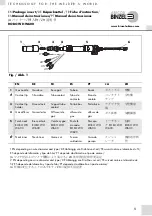
Note:
The speeds given here are typical for best quality cuts. Your actual speeds may vary
depending on material composition, surface condition, operator technique, etc. If cutting speed is
too fast, you may lose the cut. With slower speeds excessive dross may accumulate. If speed is too
slow, the arc may extinguish. Air cutting typically produces a rough face on stainless steel and
aluminium.
Establish the Cutting Arc as Quickly as Possible.
4.
Drag Cutting
- Position torch tip slightly above work piece, press torch switch and lower
torch tip forward work piece until contact is made and cutting arc is established. After cutting
arc is established, move the torch in the desired direction keeping the torch tip slightly angled,
maintaining contact with the work piece. Avoid moving too fast as would be indicated by
sparks radiating from the topside of the work piece. Move the torch just fast enough to
maintain sparks concentration at the underside of the work piece and making sure the
material is completely cut through before moving on. Adjust drag speed as desired/ required.
5.
Direction of Cut
- The plasma gas stream swirls as it leaves the torch to maintain a smooth
column of gas. This swirl effect results in one side of a cut being more square than the other.
Viewed along the direction of travel, the right side of the cut is more square than the left.
To make a square-edged cut along an inside diameter of a circle, the torch should move counter
clockwise around the circle. To keep the square edge along an outside diameter cut, the torch should
travel in a clockwise direction.
6.
Quality Cuts
- Dross (slag) is the excess material that spatters and builds up on the underside
of the work-piece as you cut. Dross occurs when the operating procedure and technique is
less than optimal. It will require practice and experience to obtain cuts without dross.
Although less than optimal cuts will contain dross, it is relatively easy to remove by breaking
17
www.strata.co.nz
ADVANCECUT 75
















































